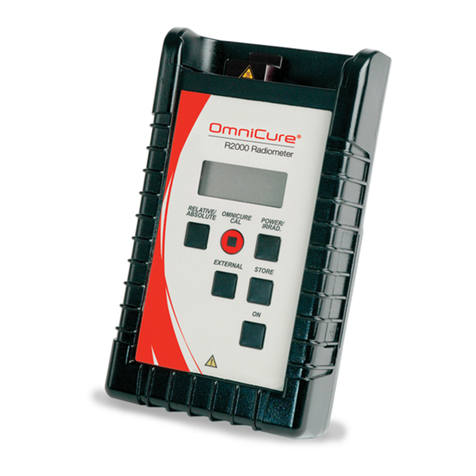X-Cite@LDGI.com
4.2 How to check/clean X-Cite® 120XL/Q metal vents
1. When unit is OFF and lamp is COOL, unplug the power from the X-Cite® unit and turn the unit upside
down. Visually inspect the metal gratings for lint, dust and other debris.
2. Debris can be removed from the gratings using a small vacuum cleaner with a crevice tool, or blown
out with a can of compressed air. If using compressed air, direct the air ow ACROSS the vents, not
perpendicularly (i.e. into the X-Cite® unit).
4.3 How to check/clean X-Cite® 120 (original design) nylon foam lters
1. Visually inspect the perforations on the side of the unit, under the lamp access door. You should be
able to see a grey mesh lter on the inside of the unit. This lter requires cleaning or replacing if:
Dust/lint/debris has accumulated•
Dust/lint/debris is blocking the view of the grey mesh lter•
The lter looks as though it is crumbling•
2. It is possible to clean newer lters, but it is generally better to replace them, as they tend to deteriorate
over time (one reason they stopped being used in X-Cite® units in 2006). Contact Lumen Dynamics
Technical Support for additional information on cleaning/replacing lters.
4.4 What happens if lters are not clean?
A complete lter blockage or airow obstruction generally results in an automatic lamp shuto within 10-15
minutes of the unit being powered on due to lack of adequate cooling.
A partially clogged lter may allow enough airow for continued operation, but not for optimal cooling. In this
case, the result is usually a dramatic reduction in lamp life, e.g. 400 hours instead of 2500+ hours, it may also cause
bubbles to form in the light guide.

























